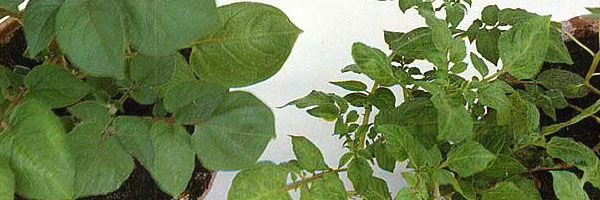
Cucumber mosaic virus
(CMV)
Cucumber mosaic virus (CMV), the type species of the genus Cucumovirus, was first found in cucumbers (Cucumis sativus) showing mosaic symptoms, hence its name. Since then, CMV has been found to infect a large range of other plants.
These include other vegetables such as squash, melons, peppers, beans, tomatoes, carrots, celery, lettuce, spinach and beet, various weeds and many ornamentals.
Symptoms due to this virus include leaf mosaic pattern or mottling, yellowing, ring spots, stunting and leaf, flower and fruit distortion. CMV is responsible for important losses in numerous crops, particularly in several Cucurbitaceae, Fabaceae, ornamental plants, tomatoes, capsicums, tobacco plants and banana trees.
Geographical distribution of CMV is world-wide, both in tropical and temperate climates. It is considered as a significant virus for vegetable crops in South and North America, Asia, Middle East and in Europe around the Mediterranean basin.
CMV is not very often observed in potatoes. Over the last twenty years, it has been identified in the USA, Egypt, Saudi Arabia and India and has also been detected in Europe (England, Germany and Estonia).
CMV can be acquired and transmitted by more than 80 aphid species in a non-persistent mode during very brief and superficial probes of infected plants. The green peach aphid, Myzus persicae, is the most efficient vector species but CMV, like PVY, can be transmitted by dozens of other species of aphid. Weeds are the main reservoir of CMV.
Like the Tobacco necrosis virus (TNV), CMV is not usually transmitted from the seed tuber to the daughter tubers. Secondary infections with severe symptoms may, however, be observed in a few cultivars (including Désirée), although not in cultivars such as Santé or Hinga.





